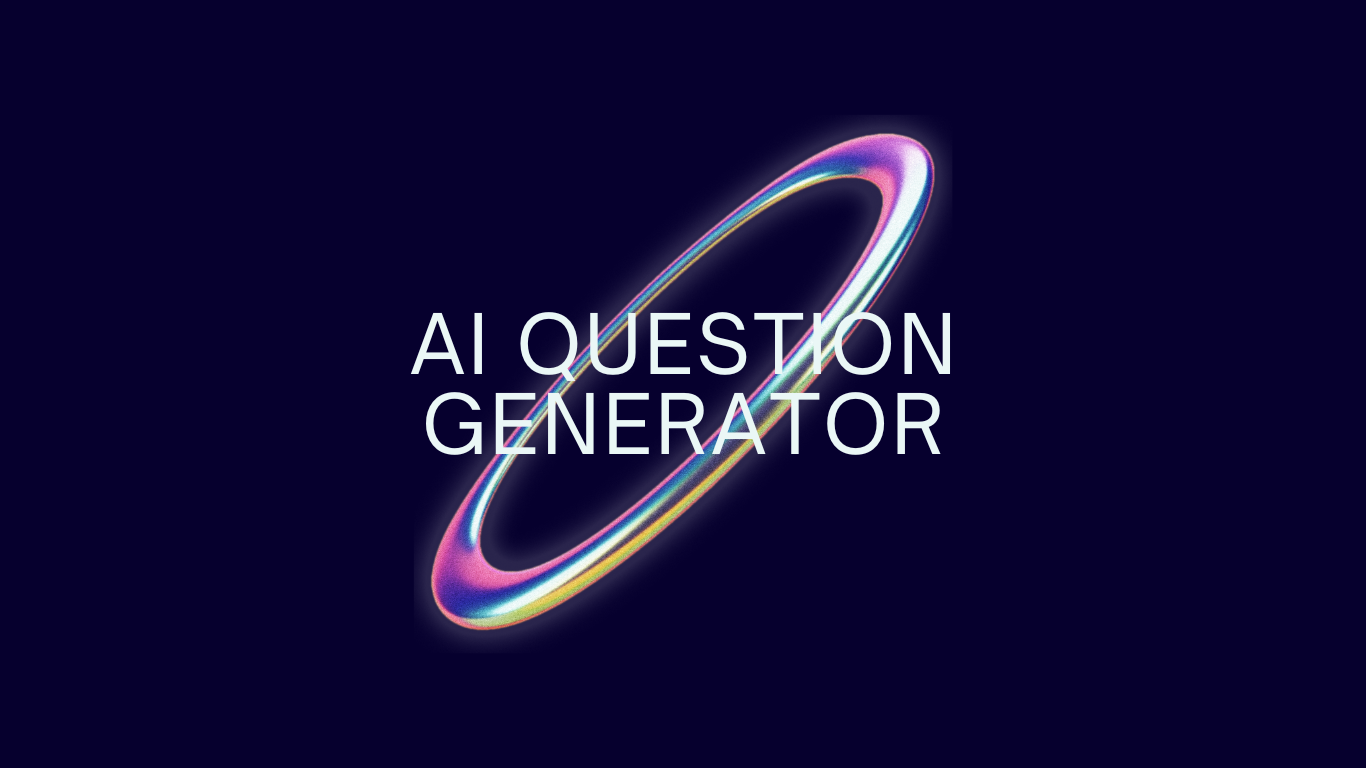Creating a Proper Backend for the AI generator Web App
June 20, 2025 •
CSS Tailwind CSS Web Development UI Design Python

The backend is a FastAPI-based Python application that provides an AI-powered question generation service from PDF documents. Here’s the complete workflow:
📁 Directory Structure
backend/main.py- FastAPI web server with REST endpointsbackend/processor.py- PDF processing and text chunking modulebackend/generator.py- AI question generation using OpenAIbackend/uploads/- Stores uploaded PDF filesbackend/data/- Stores processed chunk files and document statebackend/data/document_state.json- Tracks processing status of each document
🔄 Core Workflow
1. Document Upload & Processing (/upload endpoint)
PDF Upload → Text Extraction → Text Chunking → Embedding Generation → Storage- Upload: PDF saved to
uploads/directory - Text Extraction: Uses PyMuPDF (
fitz) to extract text from each page - Chunking: Splits text into 300-word chunks for better processing
- Embedding: Each chunk gets an OpenAI embedding (
text-embedding-3-small) - Storage: Chunks saved as JSON in
data/{filename}_chunks.json - State Tracking: Document status saved in
document_state.json
2. Document Management
- List Documents (
/documents): Shows all uploaded PDFs with processing status - Toggle Enable/Disable (
/toggle-enable): Controls which documents can generate questions - Manual Reprocessing (
/ingest): Reprocess a document if needed
3. Question Generation (/generate-question endpoint)
Query → Semantic Search → Context Building → AI Generation → MCQ Response- Semantic Search: Uses FAISS vector database to find relevant chunks
- Context Building: Combines top 5 most relevant chunks
- AI Generation: GPT-4 creates multiple-choice questions in structured JSON format
- Response: Returns question, options, correct answer, explanation, and sources
🛠️ Key Components
main.py - FastAPI Server
- CORS: Configured for frontend communication
- Error Handling: Robust error responses with proper HTTP status codes
- State Management: Tracks document processing and enable/disable status
- Health Check:
/healthendpoint for system monitoring
processor.py - PDF Processing
- Multi-format Support: Handles various PDF types including encrypted ones
- Batch Processing: Processes pages in batches to avoid memory issues
- Retry Logic: Handles OpenAI API failures with exponential backoff
- Validation: Ensures chunks contain meaningful text
generator.py - AI Question Generation
- Two Functions:
generate_question_from_document()- New function for specific documentsgenerate_question_from_query()- Legacy function for backward compatibility
- Vector Search: Uses FAISS for semantic similarity search
- Structured Output: Enforces JSON format for consistent responses
- Fallback Handling: Provides default questions if AI generation fails
📊 Current System State
Looking at your document_state.json, you have:
- ✅ AIGP_BOK_version 1.pdf: Successfully processed and enabled
- ✅ PEND OCDE 2023 Common guideposts…pdf: Successfully processed and enabled
- ❌ Mapping emerging critical risks.pdf: Failed processing (no valid chunks)
- ❌ OECD Framework…pdf: Failed processing (no valid chunks)
🔌 API Endpoints Summary
| Endpoint | Method | Purpose |
|---|---|---|
/health | GET | Health check |
/upload | POST | Upload and process PDF |
/documents | GET | List all documents with status |
/toggle-enable | POST | Enable/disable document for questions |
/ingest | POST | Manually reprocess a document |
/generate-question | POST | Generate MCQ from enabled document |
🧠 Dependencies
- FastAPI: Web framework
- OpenAI: Text embeddings and GPT-4 for question generation
- PyMuPDF (fitz): PDF text extraction
- FAISS: Vector similarity search
- Uvicorn: ASGI server
The system is well-architected with proper separation of concerns, error handling, and state management. The main strength is the semantic search capability that finds the most relevant content before generating questions, ensuring high-quality, contextually appropriate exam questions.